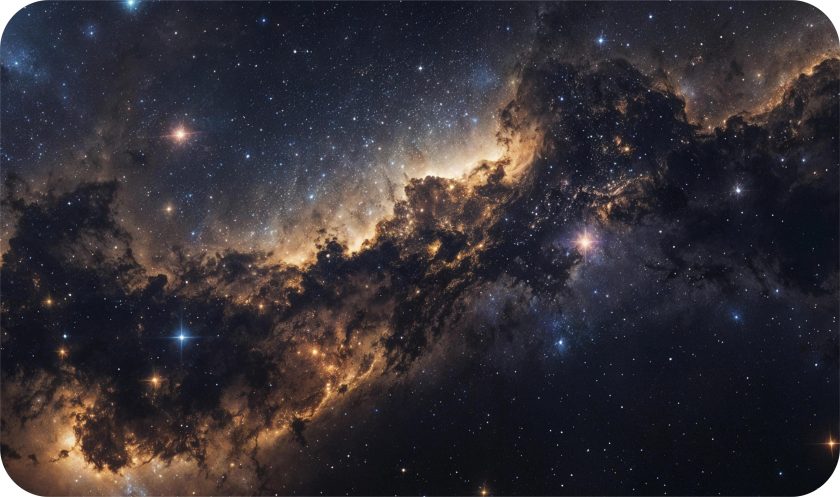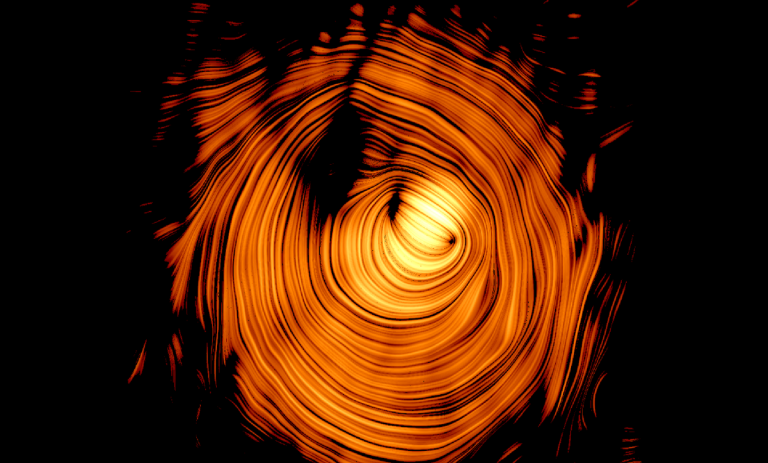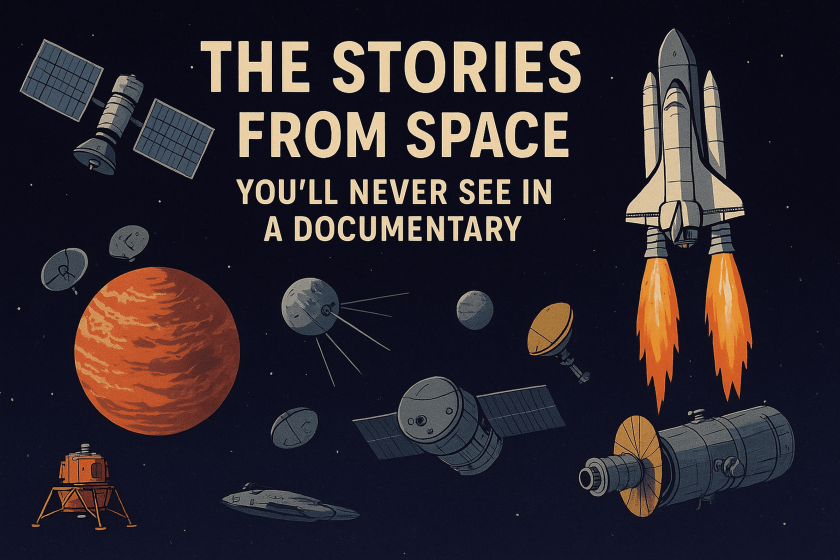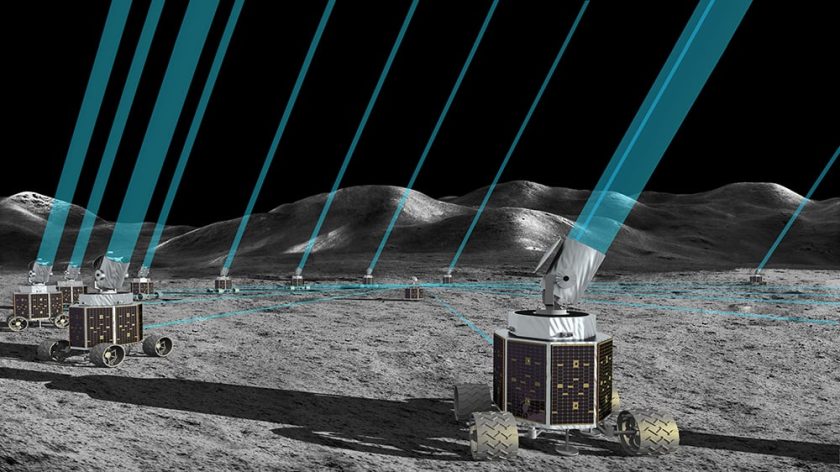
Imagine building a huge group of telescopes on the Moon, where there’s no air or weather to interfere, allowing us to see further into space than we ever could before. That’s the idea behind the Artemis-enabled Stellar Imager (AeSI), a proposed lunar interferometer designed to reveal what’s happening on the surfaces of stars and deep inside active galactic nuclei (AGN). A team led by Dr. Kenneth Carpenter at NASA’s Goddard Space Flight Center recently completed a nine-month feasibility study, and their findings suggest that this ambitious idea is not just possible, it could be a game-changer for astrophysics.
What exactly is AeSI?
At its core, AeSI is a network of 15 to 30 optical/ultraviolet telescopes arranged in a 1-kilometer-wide elliptical array on the Moon. Instead of a single giant mirror, it works by collecting light from multiple smaller telescopes, then combining the signals using a Michelson interferometer (it splits and recombines light to create interference patterns, enabling ultra-precise measurements). And it might give some really cool results, which is, the resolution of an enormous telescope, capable of capturing incredibly detailed images of stellar surfaces, accretion disks along with the turbulent regions surrounding black holes.
The lunar surface is a perfect home for this kind of instrument. Unlike Earth, there’s no atmosphere to distort images. And unlike free-flying space telescopes, the Moon’s stable surface makes it easier to keep everything precisely aligned. The telescopes would be mounted on independent lunar rovers, which could fine-tune their positions relative to a central hub that houses the beam-combining equipment and Earth communication systems. It’s like setting up a Wi-Fi mesh network, except instead of better streaming, we now could get clearer views of distant stars.
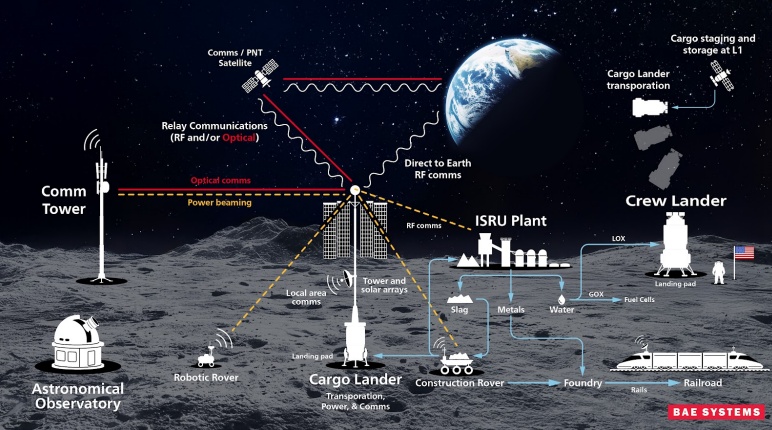
AeSI: Unveiling the Surfaces of Distant Stars
The big draw of AeSI is its ability to image the surfaces of stars with stunning clarity, something we can’t do from Earth. Right now, we mostly study stars by looking at their overall brightness or analyzing their light spectrum. But with AeSI, we could actually see features like starspots, convection cells, and plages (bright magnetic regions). It’s like finally being able to zoom in on the Sun’s distant cousins and watch their magnetic activity in real time.
Some of the key science goals include:
- Mapping star surfaces: Studying how magnetic fields drive stellar activity by imaging starspots and convection patterns on nearby stars like Alpha Centauri A and Procyon A.
- Probing stellar interiors: Using high-resolution asteroseismology to analyze oscillations in stars and refine models of their internal structures.
- Watching how stars form: Resolving accretion disks around young stars to understand how planetary systems take shape.
- Investigating AGN dynamics: Capturing detailed images of the swirling material around supermassive black holes, including AGN winds and jet structures.
- Tracking supernova evolution: Observing how young supernova remnants expand and interact with their surroundings, which could improve cosmic distance measurements.
- Studying exoplanet environments: Examining how ultraviolet radiation from host stars affects planetary atmospheres and habitability.
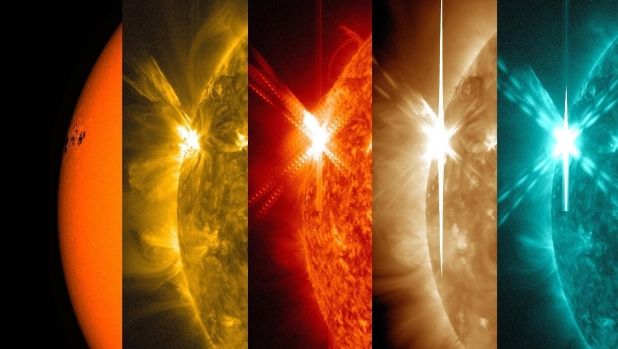
The Moon: A Stable Platform for Space Interferometry
Building an interferometer in space is tricky. Free-floating telescopes need ultra-precise station-keeping and formation flying, which is difficult and expensive. The Moon offers a solid, stable surface where telescopes can be placed with precision, eliminating the need for complex spacecraft maneuvers. Plus, Artemis missions are already working to establish a long-term lunar presence, which could provide logistical support for AeSI’s deployment and maintenance.
Other advantages of the Moon include:
- No atmosphere: Earth’s atmosphere blurs images and absorbs UV light. On the Moon, AeSI can observe in ultraviolet wavelengths that are impossible to see from the ground.
- Stable alignment: Unlike a fleet of satellites in space, the Moon’s surface provides a fixed platform that reduces the need for constant adjustments.
- Easier maintenance: Future lunar missions could send astronauts or robots to repair and upgrade the system, something that’s much harder with deep-space observatories.
The Challenges
Of course, setting up a kilometer-wide telescope array on the Moon isn’t easy. The feasibility study flagged several key challenges:
- Lunar dust: The fine, sticky dust can cover optical surfaces and reduce their effectiveness.
- Extreme temperatures: The Moon’s cycle of day and night causes extreme temperature changes, which can be tough on equipment.
- Power supply: AeSI plans to use solar power, but it faces a challenge because the long lunar night can last up to two weeks.
- Deployment logistics: Bringing all the telescopes, rovers, and equipment to the Moon and putting them in the right places is a huge task.
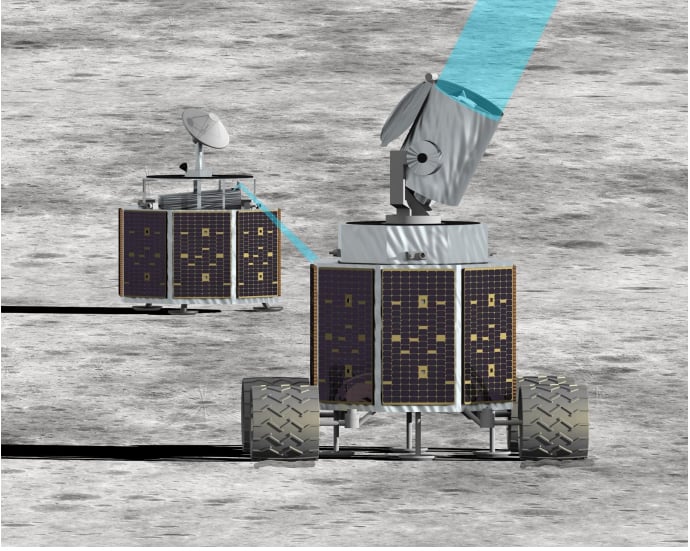
Takeaway
The feasibility study concluded that a lunar interferometer is viable, and there are no fundamental showstoppers. The next steps involve refining the mission design, tackling the engineering challenges, and developing the necessary technology, especially in areas like UV optics, beam-combining techniques, and lunar dust mitigation. Future studies will also look at how best to integrate AeSI with Artemis infrastructure, potentially using lunar power grids and communication networks along with robotic assistants for deployment and maintenance.
If AeSI moves forward, it could fundamentally change how we study stars, black holes, and planetary systems. Instead of just inferring details from spectra and light curves, we’d have direct, high-resolution images of stellar activity in action. And with its ability to operate in ultraviolet wavelengths, AeSI would complement missions like the James Webb Space Telescope, filling in gaps in our understanding of the cosmos.
In short, AeSI is an ambitious idea, but it’s one with the potential to answer some of the biggest questions in astrophysics. If we can work out the details, we might be able to see how stars function up close and maybe, even witness the early stages of how planets are formed.
Source: Universe Today

